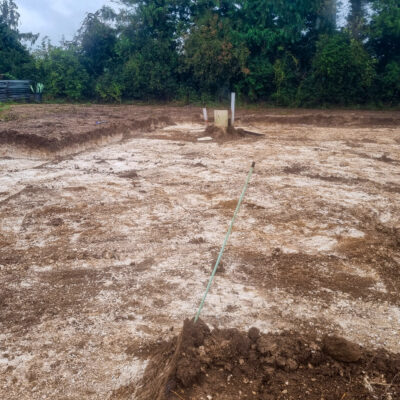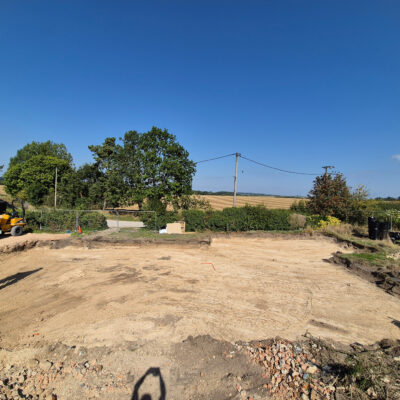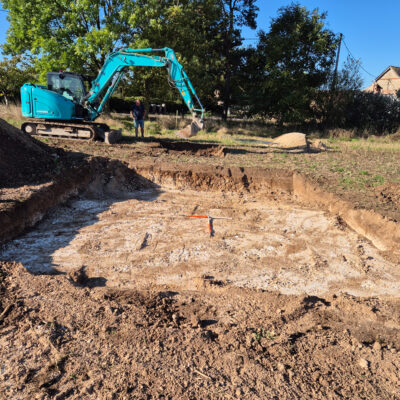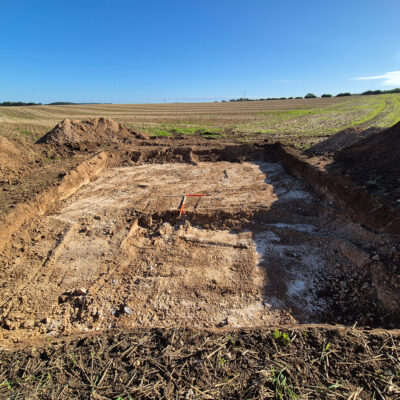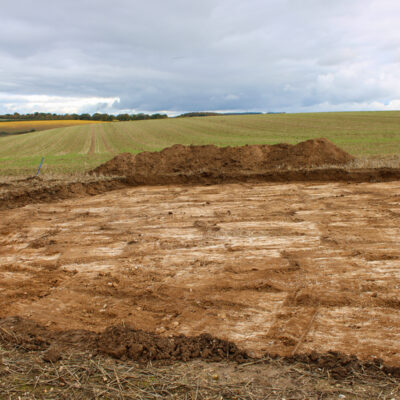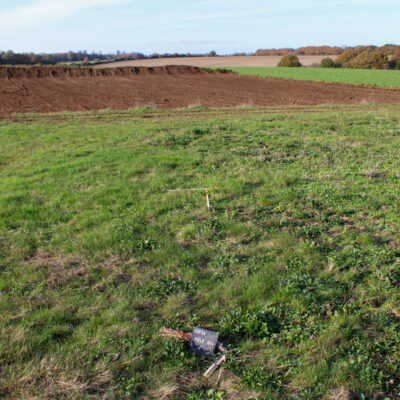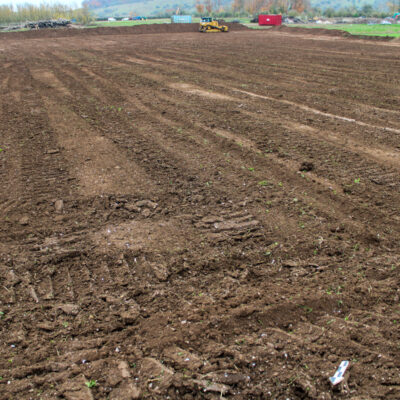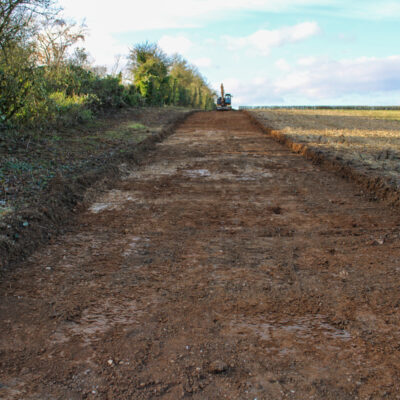Archaeological Observation, Hampshire
Significant archaeology was uncovered – some of which contained evidence of Iron Age settlement – located within the hinterland of the major Iron Age hillfort of Danebury Camp some 2.5km to the SW.
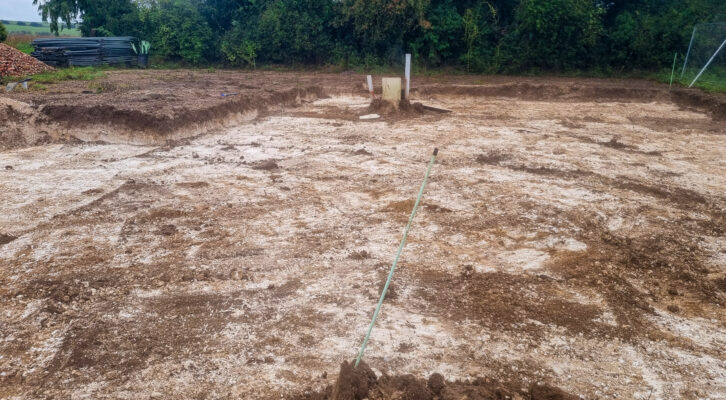
In Brief
Key Points
- Programme of archaeological observation
- Iron Age pits and ditches
- Possible iron working site
- Significant landscape of settlement and farming connected with Danebury Camp, Hampshire’s best-known archaeological site
Summary
Among the finds were six pieces from an Iron Age ‘saucepan pot’, a type of cylindrical vessel (that looks much like a saucepan but without a handle and) which was widely used in central southern England in the Late Iron Age. Another fragment found in a separate pit may have been from the same vessel. There is also some evidence (in the form of metalworking slag residue) to suggest that iron was being worked on site by a blacksmith to make finished artefacts or to repair broken items.
Evidence of a slightly later, possibly Roman, presence came in the form of a sherd from a vessel with a low pedestal or wide foot-ring found in the subsoil and which is typical of the Late Iron Age or from the earliest period of the Roman occupation around AD70. Intriguingly, there a suggestion that this period of Roman incursion may have led to conflict between the native people and the newcomers. An unworked flint nodule found on the site has been assessed as being of the right size and shape to have been used as a sling shot, the sling being among the weapons of choice used by the indigenous British during the Roman invasion.
Results
A very intriguing excavation which is underscored by the significant work required to analyse information derived from paleoenvironmental samples collected for each place within the site where such evidence was discovered and the artefacts recovered.

